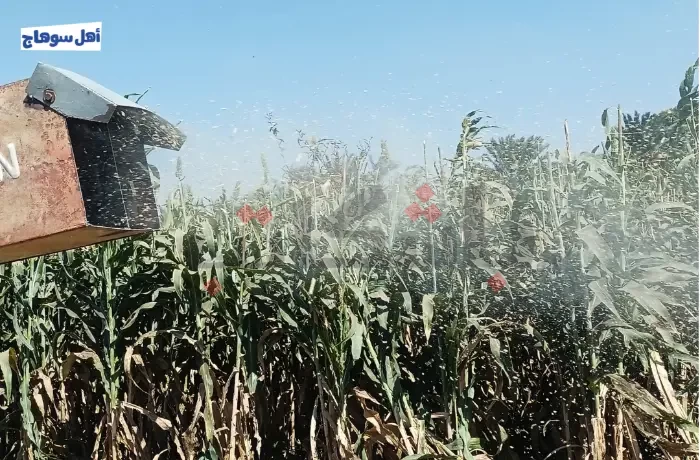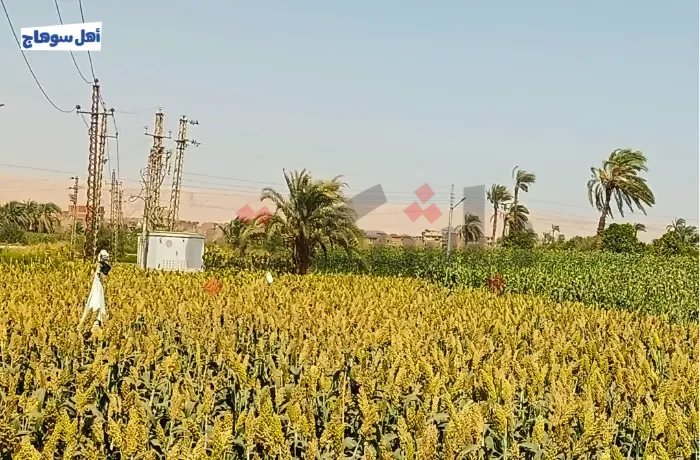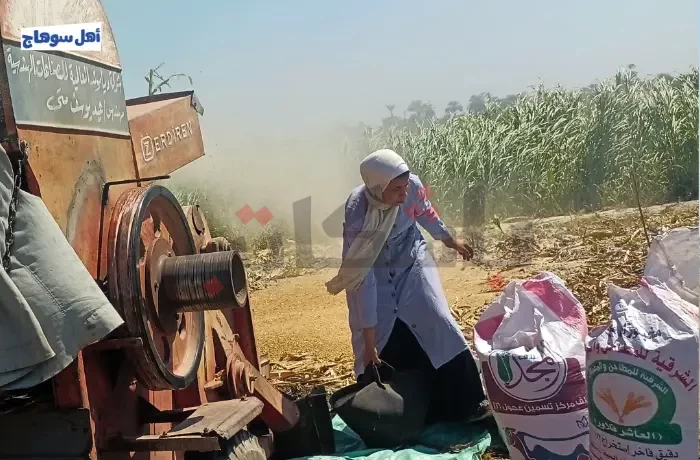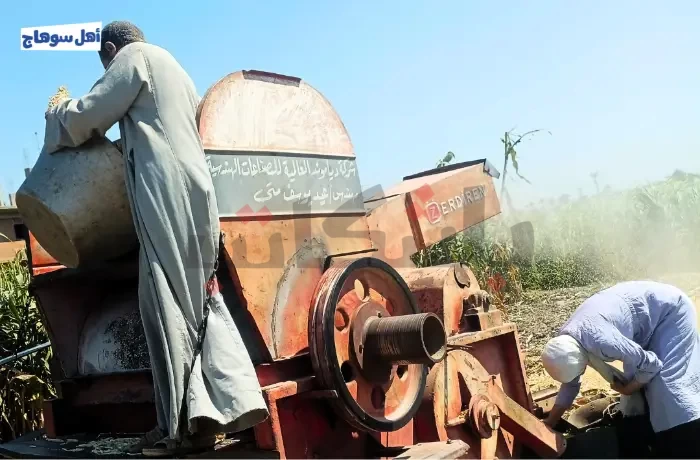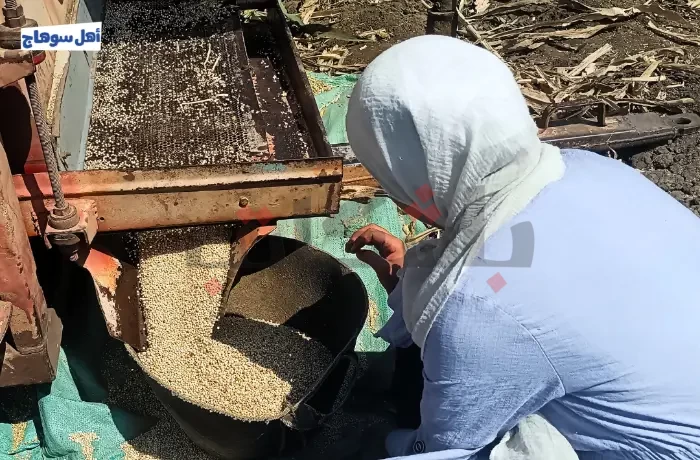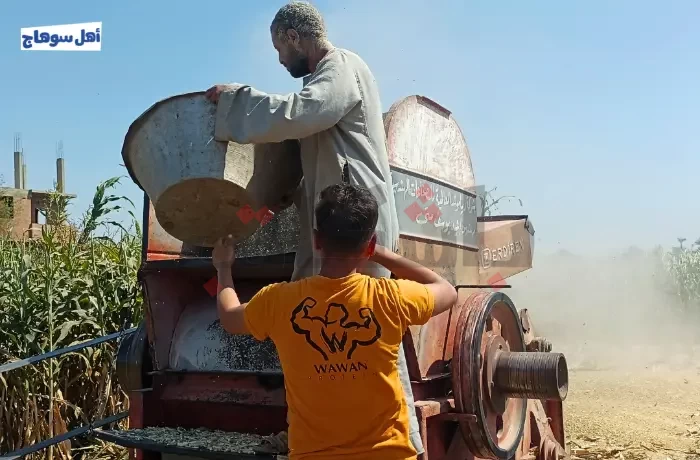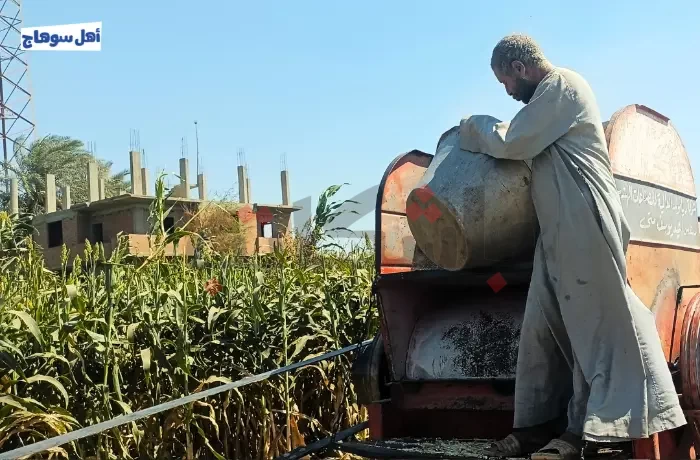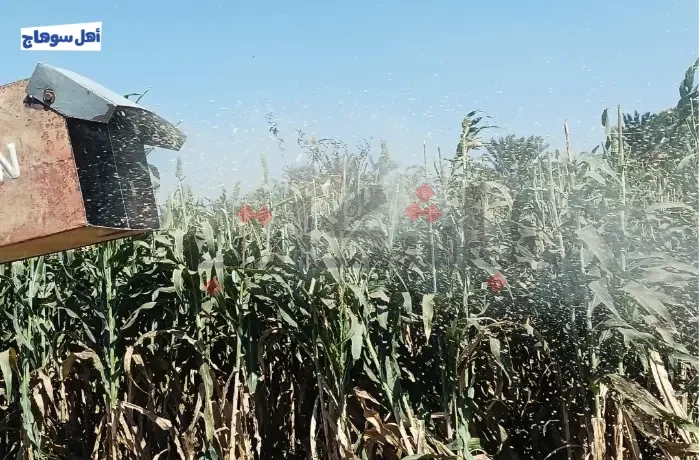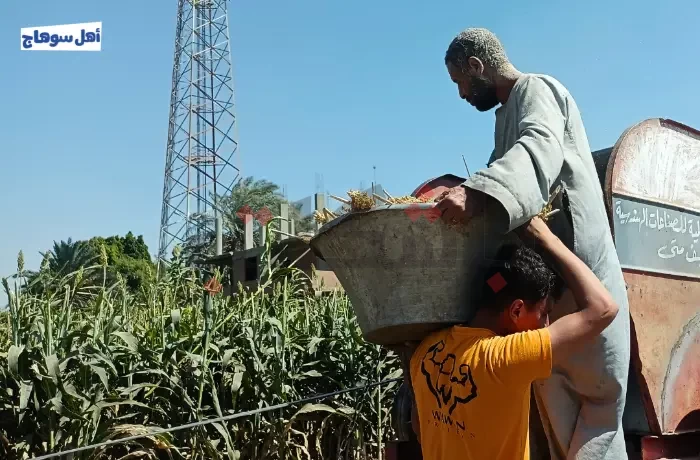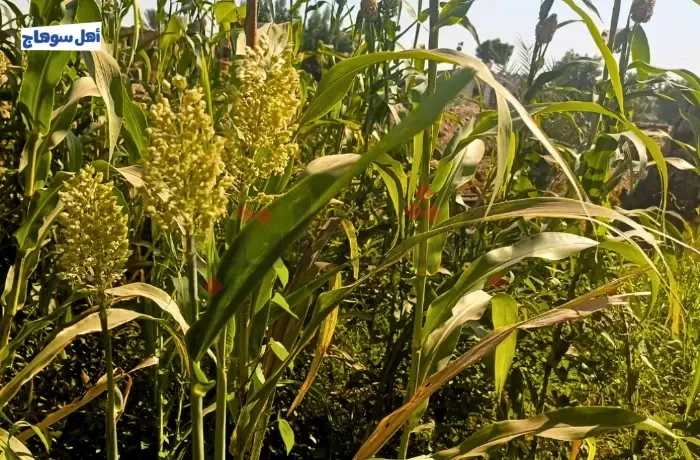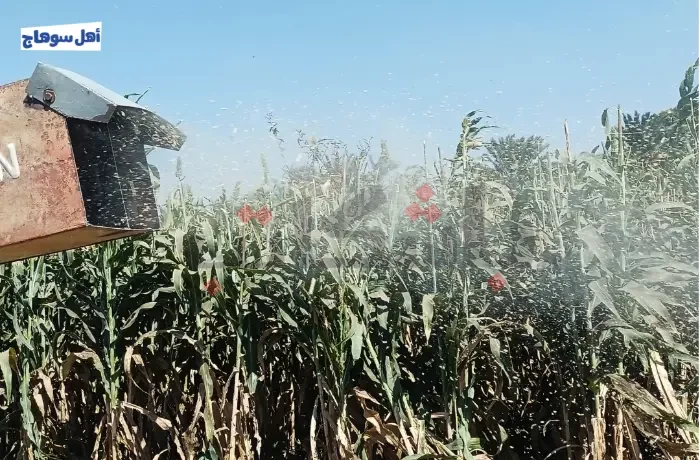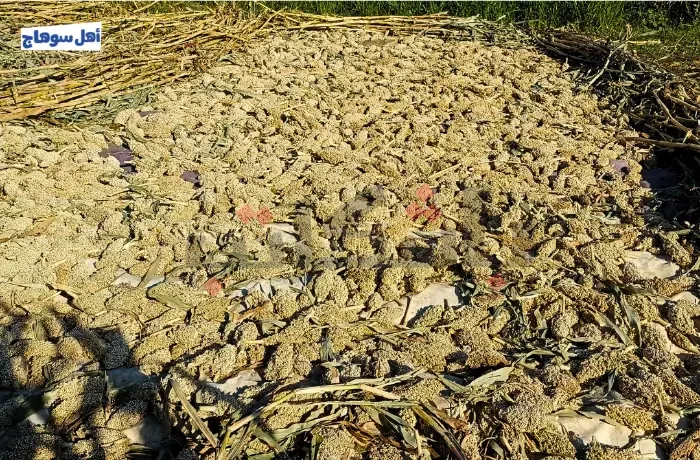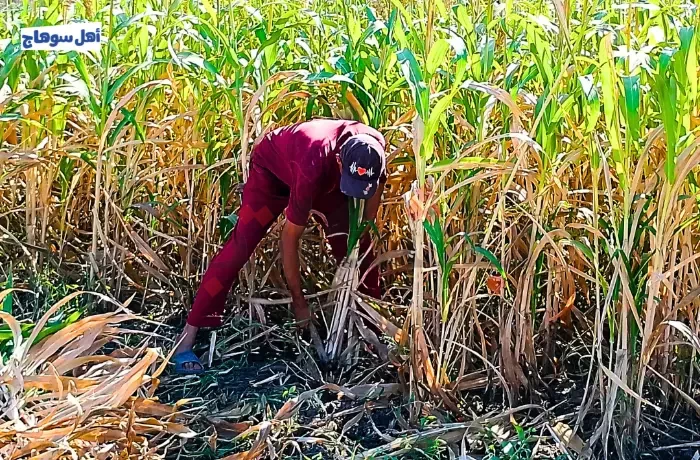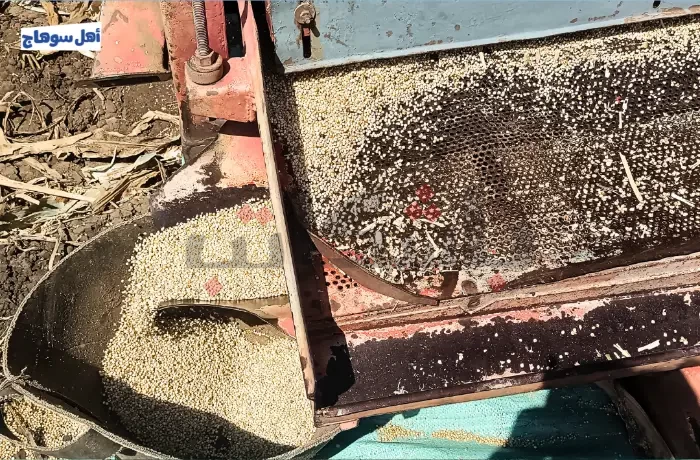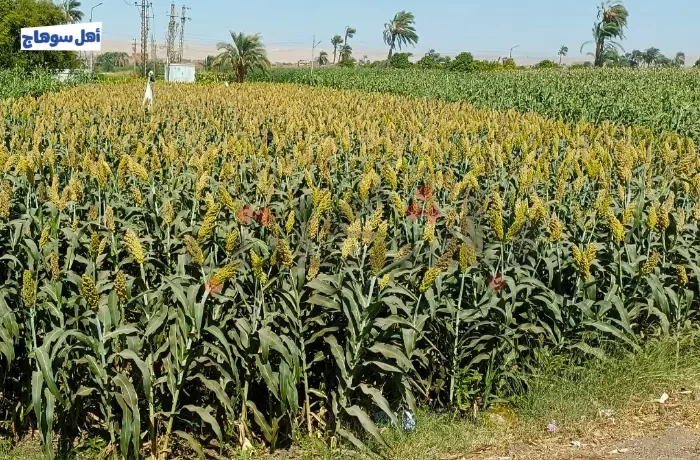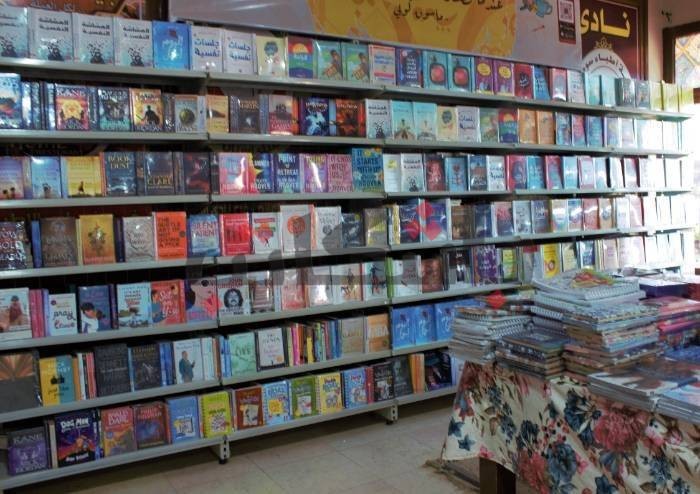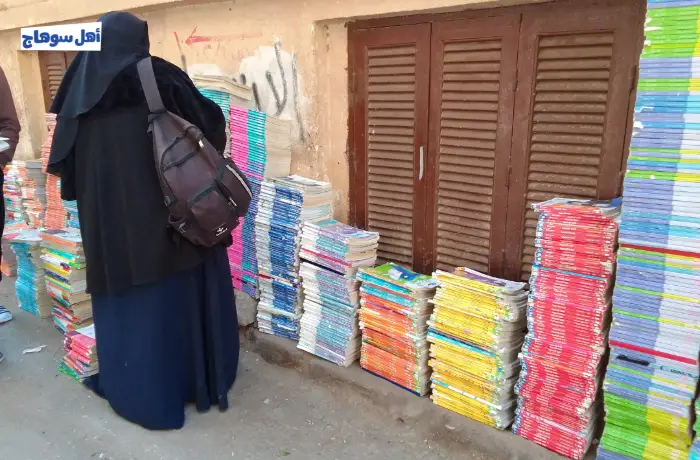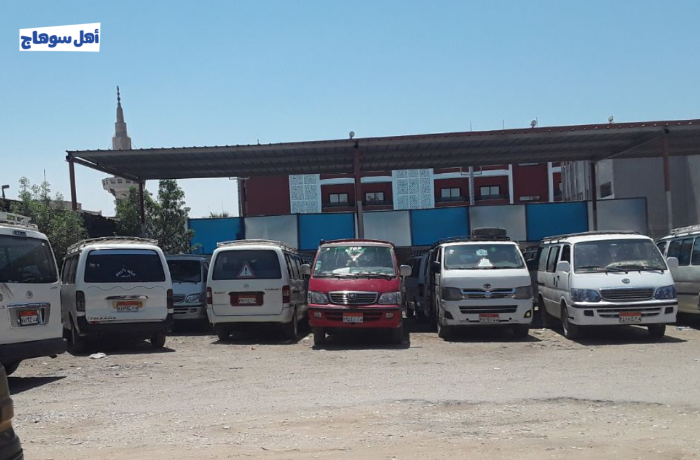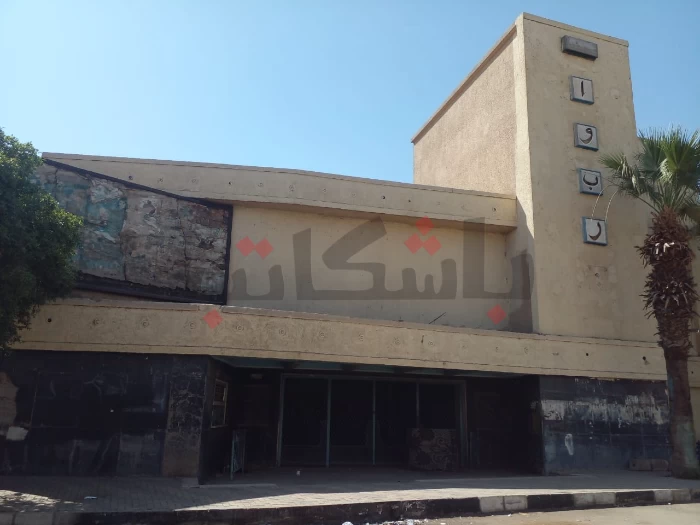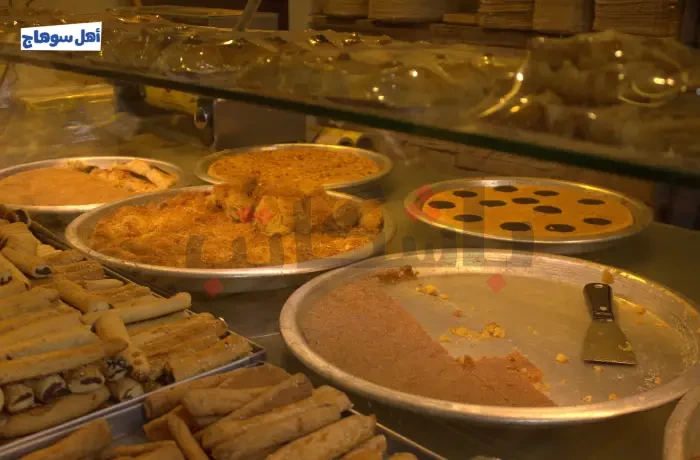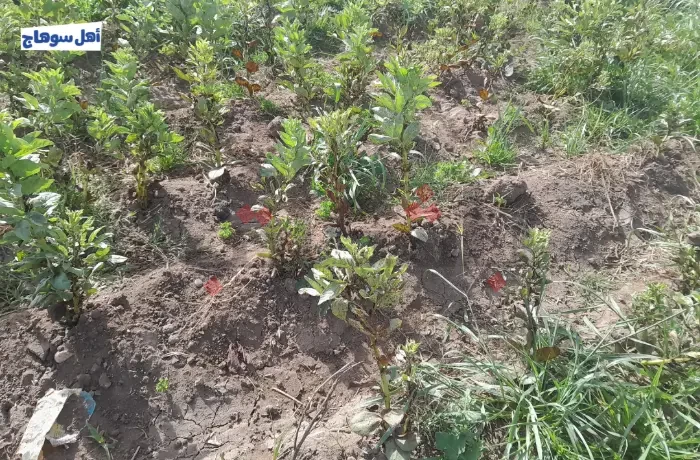Twenty kilometers from Sohag city, farmers in Maragha are nearing the completion of their Great Millet harvest. This process, which started in September and lasted until early November, involves one of the most vital summer grain crops, following rice and maize.
According to the Agricultural Research Center, Egypt leads the world in great millet production, with the majority of its cultivation concentrated in Upper Egypt. Specifically, large areas in Assiut and Sohag are dedicated to great millet, with annual planting reaching 400,000 acres.
A Slight Increase
This year, Ali Ismail, a student at the Faculty of Agriculture living in Maragha town, cultivated a third of an acre of long-stemmed (baladi) and short-stemmed (horus) great millet. He reported an average yield of 16 kilos per third of an acre, amounting to 176 kilos of great millet. During the harvest, crop waste totaled 4 kilos, equivalent to 44 kilos, as one kilo of waste represents 11 kilos.
Ismail elaborated on his cultivation of the two types of millet, stating, “Baladi, or local corn, is distinguished from horus, or great millet, by its larger grain size and higher protein content.”
“This year’s productivity is slightly higher, reaching up to 33 kilos per acre compared to previous years. This increase is attributed to adopting new farming methods, including crop rotation, which involves periodically changing the type of crop planted to enhance soil fertility. Additionally, planting the crop early in the season helped avoid the fungal formation period, resulting in an 11-kilo increase,” Ismail added.
Higher Temperatures Crisis
This year, Ismail opted to plant short-stemmed corn due to its resilience against climate change. Unlike long-stemmed corn, which is susceptible to wind damage and requires temperatures between 27 and 32 degrees Celsius, short-stemmed corn can better withstand the extreme temperatures in Sohag. During May and June this year, temperatures in Sohag ranged between 40 and 46 degrees Celsius.
Eighteen-years-old Abdullah Atef, a farmer in Maragha, encountered different challenges when cultivating half an acre of long and short-stemmed great millet. He faced issues with weak, ripe seeds and honeydew on the leaves caused by high temperatures. Atef explained that the honeydew problem arises from honey formation, which weakens plant growth and delays production. “Honey attracts butterflies, and their larvae feed on the core of the plant,” he noted.
Fertilizers Crisis
Abdullah also encountered a crisis with weak organic fertilizers, which damaged the land and impacted productivity. Additionally, he faced high prices for chemical fertilizers, which were unavailable to some farmers without land ownership. Consequently, these farmers were deprived of support from agricultural administrations, reducing their crop yields by 30% from the expected production.
Abdullah sought alternative solutions by using urea and ammonia-based fertilizers, which contain high nitrogen levels. Despite the challenges he faced during the planting season, this year's crop was 10% more productive than in previous years. Abdullah attributed this increase to his implementation of a crop rotation system.
Abdullah emphasized that the meticulous care given to the crop enabled the early detection of diseases. Despite a defect in the threshing machine resulting in one kilo of waste, the harvest size reached 10.5 kilos, equivalent to 113 kilos of great millet. Abdullah plans to use this yield for animal and livestock feed, as well as for storage and trade.
For Supplying
Qasim Mohamed Mahmoud, 55, who cultivated half an acre of long-stemmed, short-stemmed, and hybrid great miller, reported that his harvest yielded 5 kilos of long-stemmed great millet (baladi), 3 kilos of short-stemmed great millet (horus), and 3 kilos of hybrid great millet, with the residual waste amounting to half a kilo.
Qasim supplies a significant portion of his great millet crop to the Ministry of Supply, where great millet is used to produce 20% local bread, mixed with wheat flour. The remainder of the crop is utilized as feed for animals and livestock.
In response to the farmers’ challenges with the great millet crop, Alaa Taye, Head of the Farmers’ Syndicate in Sohag, confirmed that more than 50,000 acres of great millet were planted in Sohag this year. Long-stemmed great millet proved to be the most productive variety, thanks to its resilience to high temperatures and absence of strong winds. However, hybrid great millet suffered from the high temperatures, unlike the maize variety.
Corporate Manipulation
Taye added, "Farmers encountered several challenges that impacted their productivity this year. Issues included some companies tampering with seeds, rendering them unsuitable, and the high prices of fertilizers, which led to fewer applications and, consequently, reduced productivity. Additionally, farmers faced the high costs of labor and agricultural machinery, driven by the increased standard of living."
It is worth noting that last year, the area of land planted with great millet in Sohag amounted to 167,000 acres, with a productivity of 33 ardebs per acre. This information comes from Dr. Abdulatif Diab, the Undersecretary of the Ministry of Agriculture in Sohag.
